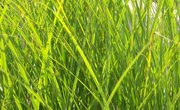
Science fair projects are a big part of today's education that allow students to experiment and explore topics of interest. Many students do not have the time or abilities required to produce complicated projects, which are often expensive and time-consuming. However, there are a wide variety of simple and easy science fair projects to choose from that require few supplies and minimal assistance.
Consumer Testing
Comparing products can result in simple, easy science fair projects. Students can compare the absorbency of several brands of paper towels, the life of different kinds of batteries or how long regular versus high-efficiency light bulbs last. Another option is comparing different kinds of microwave popcorn to find out which pops the fastest or which pops the most kernels in a certain amount of time. The only supplies needed for each project are the products themselves as well as a notebook and pencil for students to record the experiments' findings. Have students make predictions before conducting the experiments.
Mold
Growing mold is another easy science fair project. The student should choose, for example, three different types of cheese or bread and place each sample into a sealed plastic bag. A variety of conditions can be experimented with, such as whether mold grows faster on the counter or in the refrigerator and which types of food grow mold more quickly. Students should observe the samples for at least three days and record any observations, such as which type of cheese or bread grows mold first.
Plants
Plants also make a simple subject for science fair projects. Students can compare plants grown under different conditions, such as different soil and different amounts of water or sunlight. The water used for the plants can be altered with vitamins or even coffee to determine if caffeine helps or hinders plant growth. Another option is to explore whether the plants grow differently in different temperatures or in sunlight versus artificial light. Simple plant experiments can be extended to include fruit as well, such as finding out whether bananas brown faster in the refrigerator or on the counter. Young children can observe how a plant takes in water by placing a celery stalk in colored water.
Water
Water can be used for a variety of simple projects that require few materials. Students can explore the ways in which materials dissolve in water, such as whether salt, sugar or baking soda dissolves the best. Experimenting with absorption is another option; have students compare several different materials to see which absorbs the most water or which absorbs a measured amount of water the fastest. Students will also enjoy conducting experiments on which temperature of water freezes faster or how long it takes for a drop of food coloring to spread throughout glasses of different kinds of water, such as still and sparkling.
